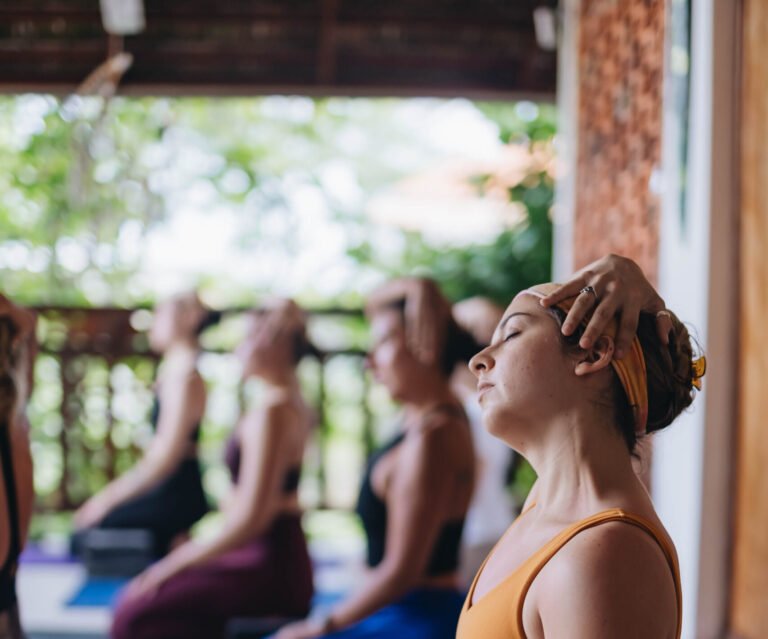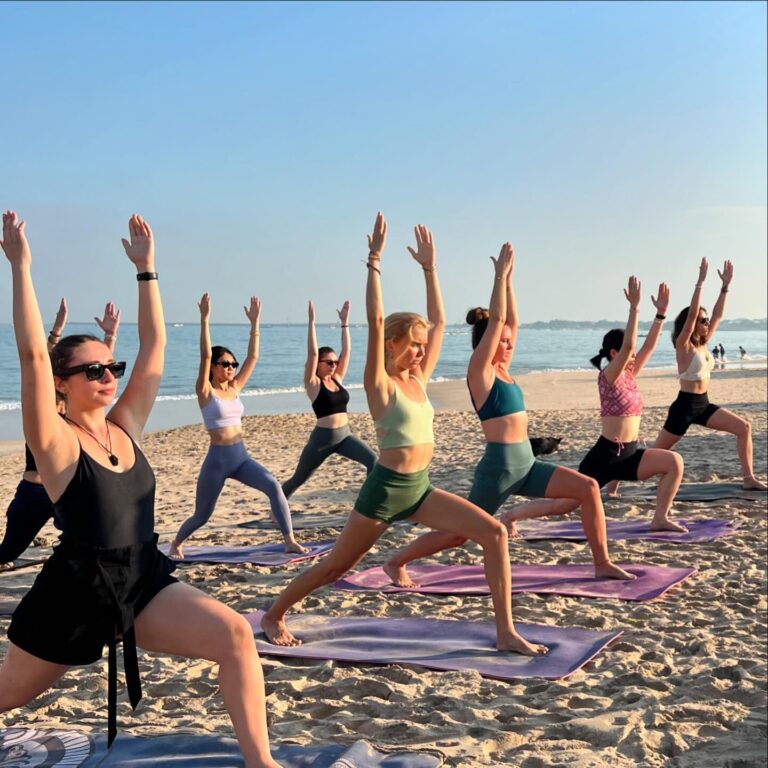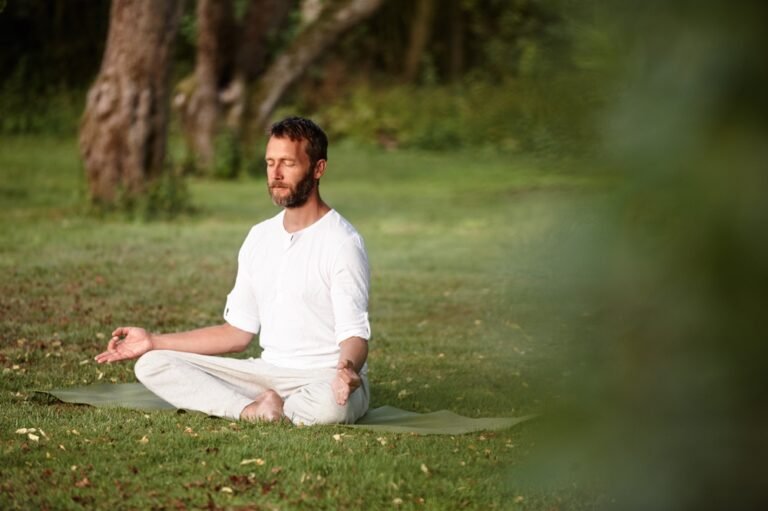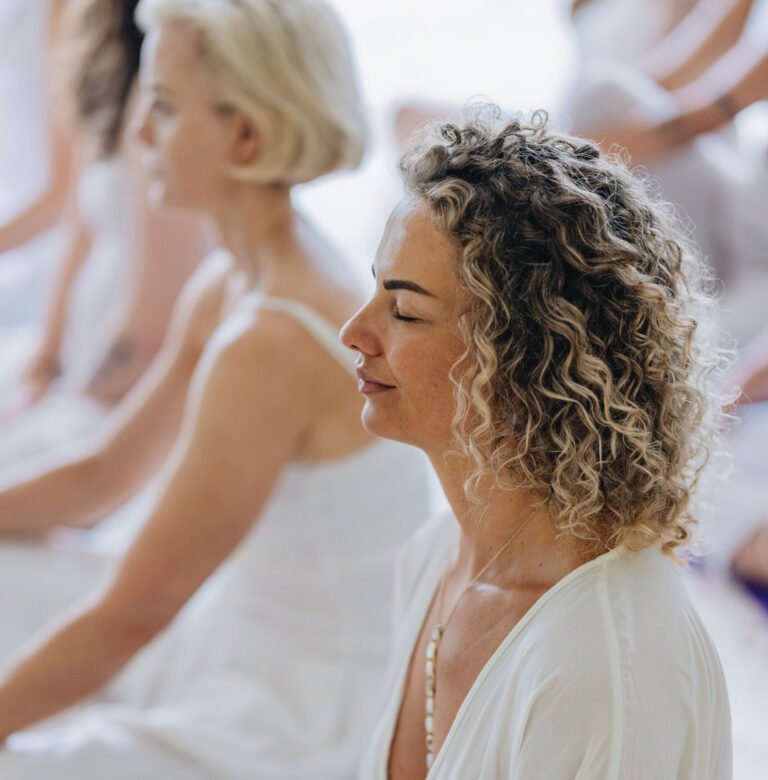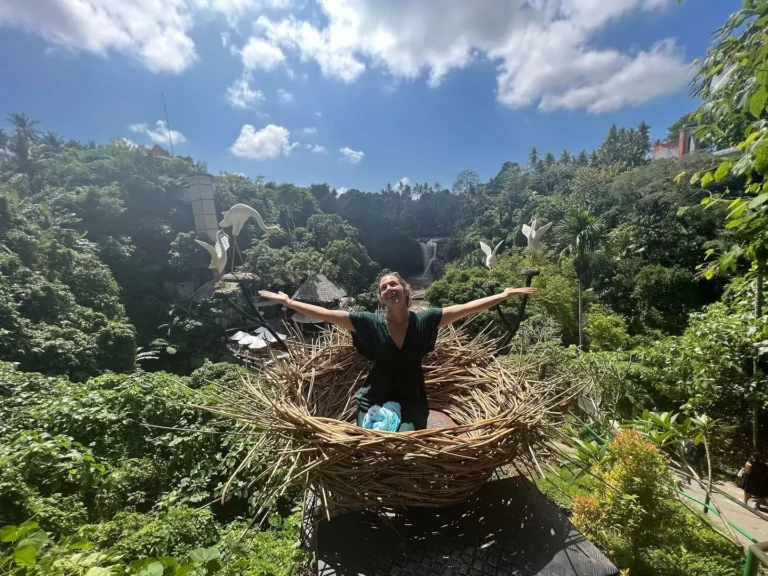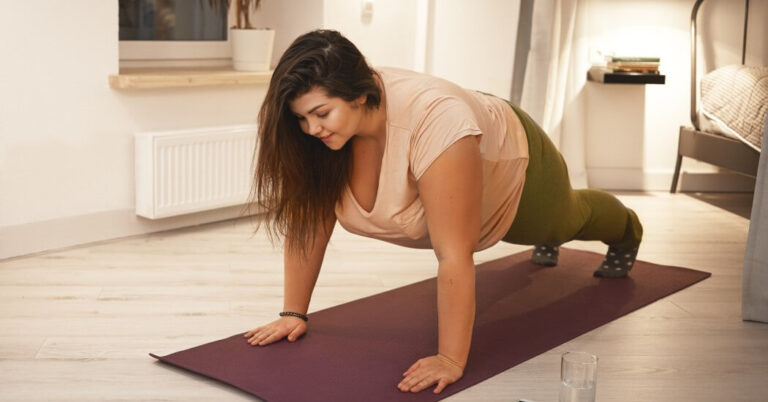Yoga for Emotional Balance: Managing Anger, Sadness and Fear
Hey there, lovely soul!
The path to emotional well-being may seem like a roller coaster ride; one moment you are okay, and the next moment, you feel a huge surge of anger or sadness in your heart or fear that paralyzes you. You are by no means lonely!
The good news? Your yoga is an amazing, in-built navigation system to find your way through this emotional terrain. Emotional balance in yoga is not only physical flexibility; it is a future system of having emotional control by combining your mind and body.
At Maa Shakti Yog Bali, we believe emotional balance starts with simple, steady daily practices—exactly what you’re about to explore.
Are you willing to learn more and discover certain strategies to deal with those giant emotions? It is time to explore specific habits of taming the intensity of your inner world.
Section 1: The Foundation—Breath and Grounding.
We always begin with the breath (pranayama) before we begin to deal with particular emotions. The fastest method of telling your nervous system that you are safe is through your breath.
The Anti-Anxiety Tool: Dirga Swasam (Three-Part Breath)

Also Read: The Science of Auras and How Yoga Affects Your Energetic Field
- How it works: This is a highly relaxing Pranayama practice to stabilize the mind, grounding it in the physical experience of inhaling and exhaling, distracting the mind from thoughts about the catastrophic fear or anxiety-inducing thoughts that fuel anxiety. It fills up the entire lung capacity, which results in the calming parasympathetic nervous system being activated.
Detailed Instruction:
- Lie on your back or get yourself in a comfortable position.
- Put one hand on your belly, the other on your ribs, and the third (or just observe) on your chest.
- Breathing should be done at a slow pace and should be directed to the lower hand (belly), then to the middle hand (ribs), and then to the upper chest.
- Breathe out gradually backwards: chest, ribs, belly (tugging the belly button softly to the back).
- Repeat 10-15 times, experiencing the wave-like movement.
The Stability Maker: Tadasana (Mountain Pose).

Also Read: Fasting and Yoga: Ancient Practices for Modern Health
- Its purpose: Fear causes us to feel dispersed or out of place. The final grounding pose is the Mountain Pose, and instantly it connects you to the ground and establishes a feeling of stability and inner strength.
Detailed Instruction:
- Keep your hips or feet at the same width.
- Lift your ten toes and straighten them out, and then put them down, pushing on the four corners of your feet (the tip of the big toe, the tip of the pinky toe, and the two points of the heel).
- Use leg muscles, pull up your kneecaps, tuck your tailbone, and pull your chest.
- Just visualize having a rope dragging you off the top of your head yet at the same time being embedded into the ground. Wait a minute, with your eyes shut, you feel your strength.
Section 2: Overcoming the Pride and Ego.
Anger is usually superfluous energy and heat. The aim is to discharge energy safely and add cooling balancing practices.
The Release: Marjaryasana-Bitilasana (Cat-Cow Flow).

Also Read: Yoga: A Journey Across Continents and Centuries
- How it works: Dynamic movement aids in burning aggressive emotions such as anger by working out. The breath is related to the continuous flow, which breaks the mental loop that is a source of frustration.
Detailed Instruction:
- Begin on hands and knees (tabletop).
- Inhale (Cow Pose): Belly is dropped, and chest and tailbone are raised (eyes are in forward direction).
- Exhale (Cat Pose): Bend the spine up toward the ceiling, and curl the head back and tailbone (push away from the floor).
- Do this 10-20 times gradually, with the long, smooth exhalations to release tension, which occurs in the mind.
The Calmer: Sitali Pranayama (Cooling Breath)

Also Read: Moon Salutations vs. Sun Salutations: Differences Explained
- How it assists: This is the most physical method of reducing the temperature in your body, which is ideal to combat the hotness of anger.
Detailed Instruction:
- Sit comfortably.
- Roll your tongue in a tube (unless you are not able to do so; purse your lips).
- Breathe in gradually by the curled tongue/pursed lips—it must be cool!
- Inhale slowly by exhaling through the nose.
- Repeat for 1-3 minutes. This immediately calms down the sense of agitation.
Section 3: Breathing in the Life of My Past.
Misery is likely to be accompanied by depression, corporeal weight, and weariness. Heart openers and soft inversions are used to oppose this force towards the ground.
The Uplift: Urdhva Mukha Svanasana (Upward-Facing Dog).

Also Read: Sattvic Foods for Mental Clarity: A Practical Guide
- Its benefit: The pose is physically and energetically opening to the front of the body, which is normally closed when we feel low. It is a soft form of inversion (heart over the head), which gives a decent charge of energy, beneficial to alleviating the signs of sadness and mild depression.
Detailed Instruction:
- Lie face down. Lay your hands to the side of your lower ribs.
- Bend your hands and tops of your feet (knees and thighs are not on the ground).
- Keep your arms straight and bend the chest forward and up.
- Shoulders should not rest against your ears. Look a little bit up or directly forward.
- Breathe 5 times, experiencing the soft swelling of the chest.
The restorer: Viparita Karani (Legs-Up-the-Wall Pose)

Also Read: Mudras and Their Benefits in Yoga
- Its benefits: this is an extremely restful pose. It enables the body to decelerate, relieves stress in the lower back, and inverts blood flow, which can be extremely beneficial when one has to do away with a lack of energy and a heavy heart.
Detailed Instruction:
- Find a wall and sit beside it, with your legs up, making your sitting bones as close as you can to the wall.
- You are to hold your arms out to the sides, with the palms of your hands in an upward position.
- Make sure to have a pillow or rolled blanket at the lower part of the back.
- Stay here for 5-10 minutes. It is a potent remedy to confusion and depression.
Conclusion: Mindfulness (The Practice of Presence).
The ultimate emotional balance is merely to know how to watch your feelings without criticism. Once you are aware of a flow of anger, fear, or sadness when you are doing yoga, accept it.
- Rather than: I am not supposed to feel this way.
- Attempt: I can see there is an emotion of anger. I shall breathe on it and leave it at that.
This practice of not being judgmental is mindfulness. It is the real way to emotional control and to be able to decide what to do with it instead of being dragged down by the emotional wave.
Turn your practice into a regular retreat. Five minutes of focused breathing will change your day.
Namaste


